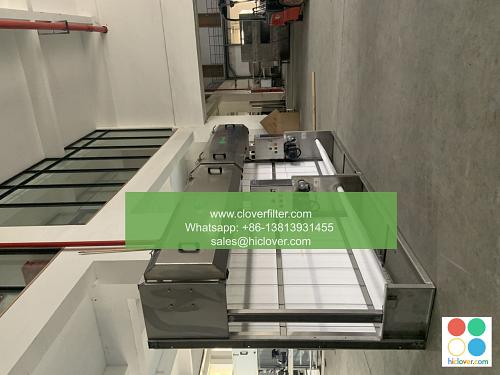Design and Optimization of Air Filters for Industrial Applications

The design and optimization of air filters for industrial applications is a critical aspect of maintaining a safe and healthy working environment. Industrial air filters are used to remove contaminants and pollutants from the air, protecting workers, equipment, and the environment. In this article, we will discuss the key considerations for designing and optimizing air filters for industrial applications, highlighting various application areas and the importance of Air Quality Management, Indoor Air Pollution Control, and HVAC System Optimization.
Types of Industrial Air Filters
There are several types of industrial air filters available, each with its own unique characteristics and applications. These include:
- HEPA Filters (High Efficiency Particulate Air Filters): designed to capture 99.97% of particles as small as 0.3 microns, making them ideal for Cleanroom Applications, Pharmaceutical Manufacturing, and Food Processing.
- Activated Carbon Filters: used to remove gases, odors, and chemicals from the air, commonly used in Industrial Odor Control, VOC Removal, and Air Purification Systems.
- Pleated Filters: designed to provide high airflow and low pressure drop, making them suitable for Commercial HVAC Systems, Industrial Ventilation, and Dust Collection.
Design Considerations
When designing industrial air filters, several factors must be considered to ensure optimal performance and efficiency. These include:
- Filter Media: the type and quality of filter media used can significantly impact the filter’s performance and lifespan.
- Airflow Rates: the filter must be designed to handle the required airflow rates, taking into account Pressure Drop and Energy Efficiency.
- Contaminant Types: the filter must be designed to capture the specific contaminants present in the industrial environment, such as Particulate Matter, Gases, and Vapors.
- Maintenance and Replacement: the filter must be designed for easy maintenance and replacement, minimizing Downtime and Operating Costs.
Optimization Techniques
To optimize the performance of industrial air filters, several techniques can be employed, including:
- Computational Fluid Dynamics (CFD): used to simulate airflow and contaminant transport, optimizing filter design and placement.
- Filter Testing and Validation: used to evaluate filter performance and efficiency, ensuring compliance with Industry Standards and Regulations.
- Predictive Maintenance: used to predict when filters need to be replaced or maintained, minimizing Unscheduled Downtime and Maintenance Costs.
Application Areas
Industrial air filters have a wide range of applications, including:
- Manufacturing: Food Processing, Pharmaceutical Manufacturing, Automotive Manufacturing, and Aerospace Manufacturing.
- Energy and Utilities: Power Plants, Oil and Gas, Renewable Energy, and Wastewater Treatment.
- Healthcare: Hospitals, Clinics, Medical Research, and Laboratories.
- Commercial and Institutional: Office Buildings, Schools, Universities, and Government Facilities.
Conclusion
In conclusion, the design and optimization of air filters for industrial applications is a critical aspect of maintaining a safe and healthy working environment. By understanding the key considerations for designing and optimizing air filters, and highlighting various application areas, industries can ensure compliance with Air Quality Regulations, Occupational Health and Safety Standards, and Environmental Protection Agency (EPA) Guidelines. By investing in high-quality industrial air filters and implementing Optimization Techniques, industries can reduce Operating Costs, minimize Downtime, and protect the health and well-being of workers and the environment.
You haven’t asked a question or provided any context. Please provide more information so I can assist you. What would you like to talk about or ask?

